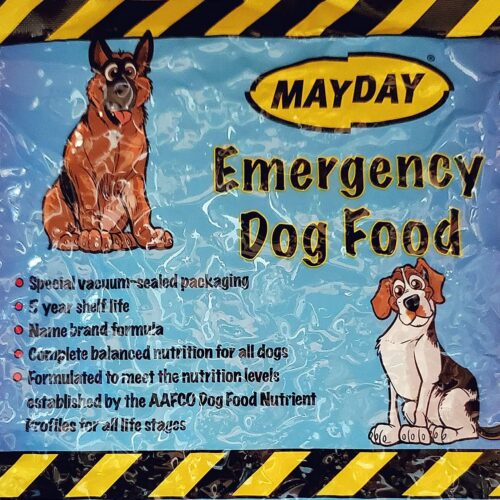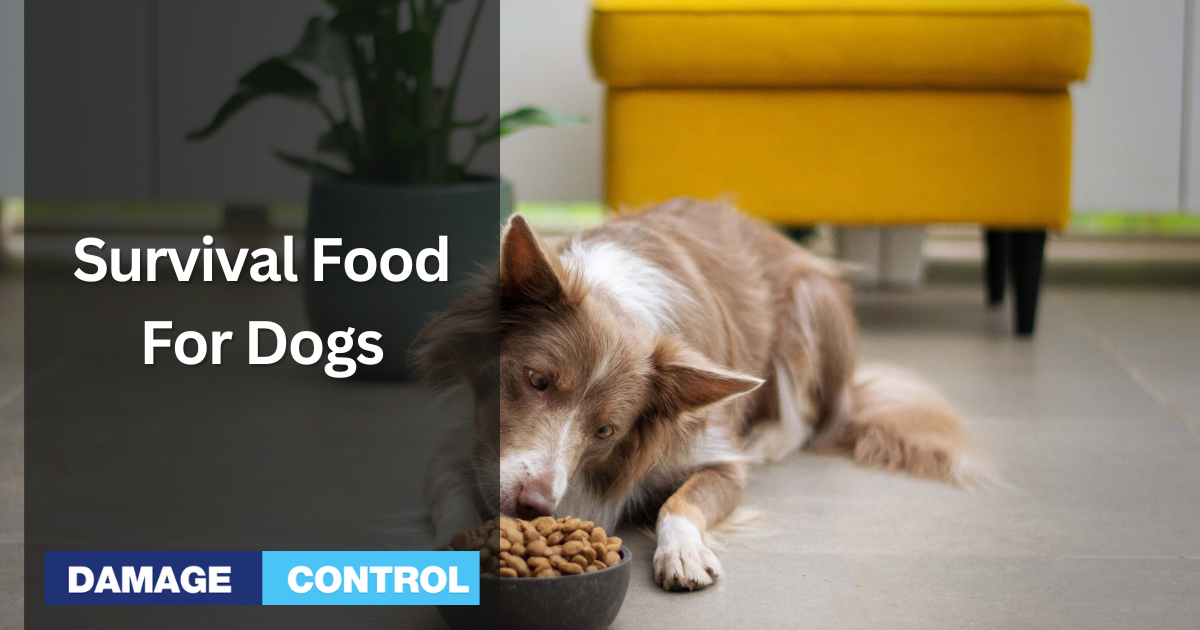We all know how vital it is to be prepared for emergencies, from stockpiling water to keeping first-aid kits handy. But let's not forget about our four-legged family members. Yes, your dogs need an emergency survival plan too. Today, we're diving deep into the best survival food for dogs. This guide will arm you with the knowledge you need to ensure your pet is as prepared as you are for any calamity.
What Kind of Nutritional Needs Do Dogs Have in an Emergency?
First and foremost, it's important to consider what your dog needs nutritionally. Just like us, they require a balanced diet. Even in emergencies.
- Protein: The building blocks for muscles. Think meat or plant-based alternatives.
- Fats: Needed for energy. But keep it moderate.
- Carbohydrates: Think grains and vegetables. Yes, dogs need their veggies too!
- Vitamins and Minerals: Often overlooked, but crucial for overall health.
Remember, these needs don't change in a crisis situation. If anything, they become even more essential.
Which Dog Foods Should You Stock Up On?

You're probably wondering what type of dog food is best for survival situations. Well, let's break it down.
- Dry Dog Food: Easiest to store and lasts a long time.
- Wet Dog Food: More nutritious but has a shorter shelf life.
- Freeze-Dried and Dehydrated Options: Lightweight and long-lasting. But often expensive.
- Homemade Dog Food: Can be made in bulk and frozen. But it takes effort and preparation.
Each of these has its pros and cons. The best approach? A mix of these options to ensure balanced nutrition.
Can You Use Human Food as a Substitute?
Great question! In dire situations, certain human foods can double as dog food. But tread carefully, as feeding your dog human food can cause them to expect it, which may make them reject their own food when they get it.
- Rice and Pasta: Quick and easy carbohydrates.
Lean Meat: Chicken or turkey is good but skip the seasoning. - Vegetables: Carrots, peas, and even potatoes. But avoid onions and garlic!
Make sure to consult your vet before making any significant dietary changes for your pet, as not all human foods are safe for your pet's consumption.
What About Food Allergies and Special Dietary Requirements?
In emergencies, your dog's special dietary needs can't be ignored.
- For dogs with allergies, keep hypoallergenic dog food.
- Senior dogs may require food low in sodium and fats.
- Puppies need food rich in calcium for growing bones.
Don't assume that any food will do in an emergency. Consult your dog's vet before making any dietary decisions.
How to Store Your Dog's Survival Food?
The Process
When it comes to storing survival food for your furry friend, the way you do it matters as much as what you're storing. Here’s a step-by-step guide to ensure that your dog's emergency food remains as fresh and nutritious as possible.
01. Choose the Right Container
- Use airtight containers. They lock in freshness and keep out moisture and pests.
- Opt for food-grade plastic or stainless steel containers.
02. Pick the Right Location
- Store the food in a cool, dark place.
- Avoid places like the garage or attic where temperatures can fluctuate.
03. Label Containers
- Clearly mark the date of purchase and the expiration date on each container.
- This will help you rotate stocks more effectively.
04. Portion Food
- Use smaller, separate bags within the main container.
- This way, if you have to evacuate, you can grab just the right amount.
05. Use Oxygen Absorbers
- These little packets absorb oxygen and extend the food's shelf life.
- But remember, they’re not a replacement for a quality airtight container.
06. Regularly Check Stock
- Inspect the food for signs of spoilage or pest infestation.
- Do this at least every three months.
07. Rotate Your Stock
- Use the oldest food first and replace it with new stock.
- Rotation ensures that the food stays fresh and nutritious.
08. Keep a Feeding Guide
- List the proper feeding amounts and any special dietary needs your dog has.
- Attach this guide to the container so anyone can feed your dog properly in your absence.
By following these steps, you can ensure that your dog's survival food will be in the best possible condition should you ever need it. And, honestly, that peace of mind is priceless when you’re preparing for the unexpected.

